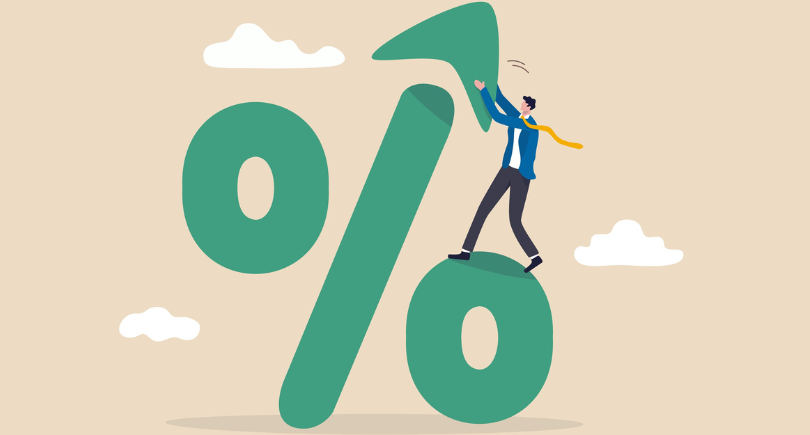
A credit card’s interest rate can go up under a few scenarios, with some in your control and others not. First, the Federal Reserve Bank can adjust the federal funds rate and may as an attempt to curtail inflation. When it does, the prime lending rate follows suit. Most credit cards have variable APRs, which means the rate is tied to an index such as the prime lending rate. When that rate increases, so does your credit card’s variable APR. Your card’s APR may also increase when the temporary rate expires or when you’ve mismanaged the account.
Because the cost of carrying over credit card debt depends on the interest rate, you’ll want to get and keep the lowest APR possible – or even avoid these financing fees altogether. Here’s how.
Know your current APRs
Chances are you don’t know the APR that’s attached to your credit card offhand, yet without that knowledge you can’t monitor rate adjustments. If the Fed raises rates, the issuer won’t give you advance notice before the APR on your card also goes up.
Therefore, to prepare for a hike, you have to know what it is right now. That information will be listed on your credit card statement. You may see several different APRs, depending on usage, such as one for purchases, balance transfers, cash advances, and defaults. Make a note of all.
Commit to paying off balances in full
The higher the APR, the pricier revolved debt will be. For example, a $5,000 balance on a credit card with a 12% APR will cost $733 in interest (assuming you sent fixed monthly payments of $200 until you were in the clear). However, If the APR were 29%, the total interest charges would be $2,240.
Clearly the APR has an impact on the ultimate cost of the debt, but if you didn’t owe any money, the rate would be irrelevant. In fact, the best way to get around a high or hiked-up APR is to only charge the amount you can and will repay in full when the bill comes in.
Develop an automated payoff plan
If you have credit card debt now that you can’t pay off immediately, develop an assertive payoff plan so it doesn’t cost you quite so much in the end. Review your budget to determine exactly how much money you can apply to the balance every month. Have that sum deducted from your checking account and sent to your credit issuer to never fall below that figure.
So you’re aware of how long debt repayment will take and cost, use an online calculator to accurately plan.
Request a lower APR
If you fell behind on your account and the issuer didn’t receive at least the minimum payment within 60 days after the due date, the original APR can be switched to a much higher default APR. Depending on the card you have, the default rate can remain for the duration of your account. Contact your credit card issuer to find out if that is a stipulation of the agreement.
The good news is that most credit card issuers will lower the rate after you send a series of timely payments, so from this month forward pay by or before the due date. After about six months, call the issuer and point out that you have been a responsible card holder and ask that they reduce the rate. There are no guarantees, but it’s always worth trying.
Consolidate your debt with a loan
In the event that your credit card issuer doesn’t budge on the APR, check out what is available with personal or debt consolidation loans. These products can have rates that are significantly lower than credit cards.
Consolidating your high interest credit card debt with a low interest loan can make a big difference. For example, if you owed $10,000 on a credit card with a 24% APR, and made monthly payments of $500 it would cost you $2,524 in interest and take 26 months to become debt-free. On the other hand, a loan with a 24-month term and a 6% interest rate will only cost you $620 in financing fees. The monthly payment would be $442, so less than the credit card, and it would shave two months off the repayment term.
➤ LEARN MORE: Credit card ‘built-in’ fixed APR personal loans vs. traditional personal loans
Use a balance transfer credit card
To escape interest entirely on existing debt, consider a balance transfer credit card. As long as you pay the entire debt within the finance fee-free time frame, all it would cost you is the balance transfer fee, which is typically between 3% and 5% of the transferred sum. Balance transfer credit cards can have 0% APRs for as long as 21 months, too.
How much can these cards save you? A lot, in both money and time. For example, if you owed $7,000 on a credit card with a 26% interest rate and paid $350 a month, the interest would be $1,948 and it would take you 27 months to achieve a zero balance. Transfer the debt to a credit card offering 0% APR for 21 months (with a 3% transfer fee, making the balance $7,210) and you’ll be out of debt approximately six months faster and pay nothing in financing fees!
Look for a fixed rate credit card
To mitigate a credit card’s APR from rising when the Fed increases rates, you may opt for a credit card with a fixed rate.
Most credit cards do come with variable rates, but some credit unions offer cards that have fixed rates. If you can find one that does (and that has all the other features you want), you won’t have to worry that the APR will change. Just be sure to treat the account according to the agreement. If you are late on payments, the issuer still has the right to increase the APR to a punitive rate, so be careful.
➤ LEARN MORE: Fixed rate vs. variable APR credit cards
Increase your credit score to get the lowest APR
Since there aren’t that many cards with fixed rates, you may focus on those with variable rates when you want to open a new account. You’ll notice a range of listed APRs for purchases, such as 16.24% to 28.24%. The rate you get will be based largely on your credit worthiness. If your credit score is on the low side, the APR will be on the high side, and vice versa.
Consequently, the best way to get a card with a low APR is to develop great credit first. FICO Scores start at 300 and go up to 850. The closer your numbers are to the top of that scale, the more creditworthy you are. To get there, use a number of credit products the right way over a long period of time. Payment history is the most important so make all of your payments on time. Also keep your credit utilization ratio very low, by maintaining plenty of distance between your card’s credit limit and the balance.
Control what you can and don’t fret about the Fed
Clearly, you have no influence over what the Federal Reserve will do. If they increase rates, so be it. You do have plenty of control over the way you handle credit products, though. Monitor your accounts, become a low-risk credit customer, communicate with your issuers about a rate hike, and always seek the best account you can get.


